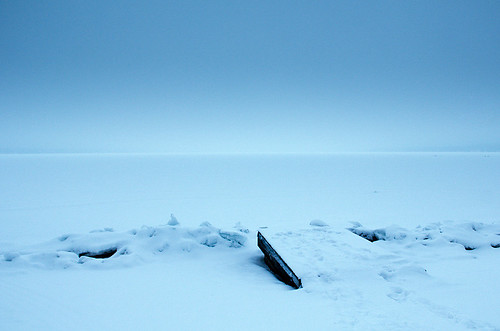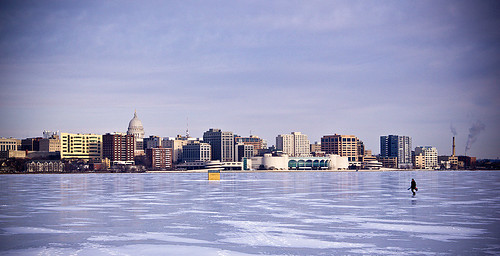" Researchers at the University of Wisconsin-Madison have data recording the formation and melting of ice on Lakes Mendota and Monona in Madison since 1855. The timespan of this record makes it an invaluable resource for documenting the local impacts of long-term climate change.
The records show significant year-to-year variability in the length of the ice-cover season, but there is a clear trend of fewer ice-cover days over time. Overall, the average number of days of ice cover on the Madison lakes has decreased by around 29-35 days over the past 150 years. Significantly, the longest ice seasons on record are all clustered in the first few years of the record, while most of the shortest seasons fall towards the end of the record.
The impacts of reduced ice cover are ecologically significant for lakes and their aquatic species. Ice cover regulates lake temperatures, dissolved oxygen levels, light penetration, and many other ecological parameters that govern growth and reproduction of species and interspecies relationships. Because ice cover reduces wintertime evaporation, it helps to maintain a lake’s water level. A lack of ice cover means that winter winds can make contact with lake waters, disturbing fish nesting sites, and impacting the ways lakes stratify, or form layers of water ordered along a temperature gradient. No ice cover also means no snow cover, allowing sunlight to penetrate the water and increase its temperature. In turn, warmer water temperatures may make the Madison lakes more hospitable to non-native species. For example, University of Wisconsin lakes researcher Jim Kitchell has documented an increase in numbers of sea lampreys, an invasive pest and lake trout parasite, as Lake Superior’s waters warm." -ClimateWisconsin.org
Tuesday, March 8, 2011
Winter Over Lake Monona
Subscribe to:
Posts (Atom)


